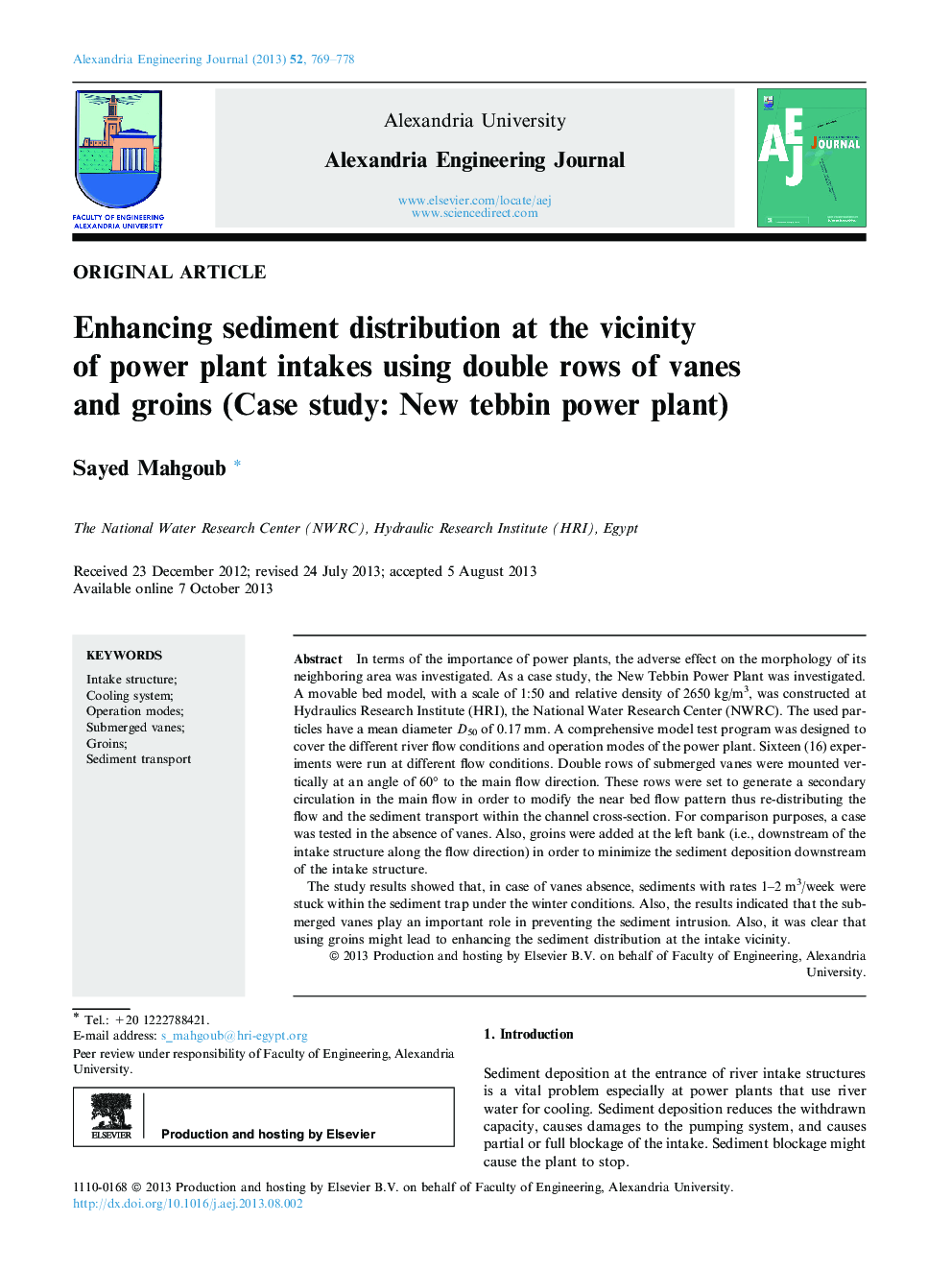| Article ID | Journal | Published Year | Pages | File Type |
|---|---|---|---|---|
| 816354 | Alexandria Engineering Journal | 2013 | 10 Pages |
In terms of the importance of power plants, the adverse effect on the morphology of its neighboring area was investigated. As a case study, the New Tebbin Power Plant was investigated. A movable bed model, with a scale of 1:50 and relative density of 2650 kg/m3, was constructed at Hydraulics Research Institute (HRI), the National Water Research Center (NWRC). The used particles have a mean diameter D50 of 0.17 mm. A comprehensive model test program was designed to cover the different river flow conditions and operation modes of the power plant. Sixteen (16) experiments were run at different flow conditions. Double rows of submerged vanes were mounted vertically at an angle of 60° to the main flow direction. These rows were set to generate a secondary circulation in the main flow in order to modify the near bed flow pattern thus re-distributing the flow and the sediment transport within the channel cross-section. For comparison purposes, a case was tested in the absence of vanes. Also, groins were added at the left bank (i.e., downstream of the intake structure along the flow direction) in order to minimize the sediment deposition downstream of the intake structure.The study results showed that, in case of vanes absence, sediments with rates 1–2 m3/week were stuck within the sediment trap under the winter conditions. Also, the results indicated that the submerged vanes play an important role in preventing the sediment intrusion. Also, it was clear that using groins might lead to enhancing the sediment distribution at the intake vicinity.
